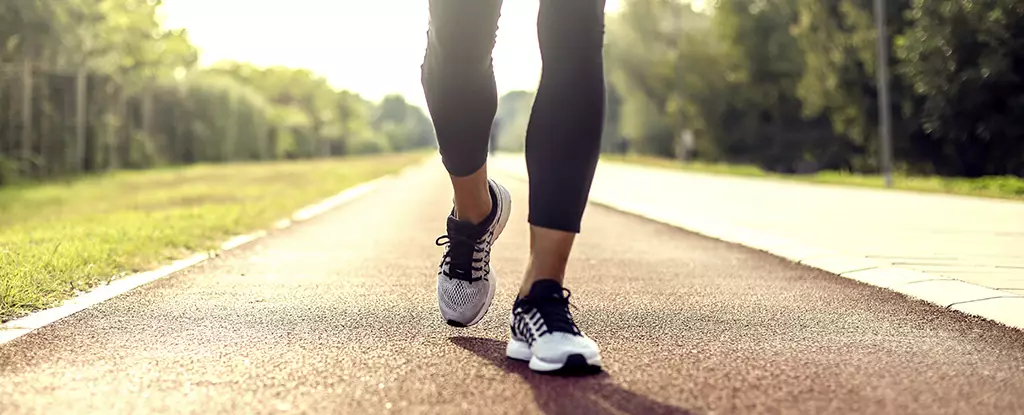In an era where technological advances and sedentary lifestyles dominate daily routines, the timeless act of walking is being rediscovered—not merely as a means of transportation, but as a potent tool for improving health outcomes. Recent research from Vanderbilt University compellingly underscores that the pace at which we walk can have profound implications for longevity, especially among historically marginalized populations. This isn’t just an ordinary health tip; it’s a clarion call for individuals and policymakers alike to transform simple physical activity into a catalyst for societal change.
While many dismiss walking as trivial, the evidence suggests that the speed of our steps can literally add years to our lives. The study reveals that dedicating just 15 minutes per day to brisk walking can significantly reduce the risk of early death, primarily from cardiovascular ailments. This finding is particularly striking considering that the study concentrated on low-income and Black communities—groups often overlooked in health research and burdened with disparities rooted in access, environment, and socioeconomic factors. The implications extend beyond individual health, hinting at a powerful, community-centered approach to reducing health inequities.
Challenging Preconceived Notions About Exercise and Accessibility
The era of expensive gym memberships and high-tech workout gear often creates barriers for those most in need of health interventions. Walking, however, sidesteps these hurdles. It’s an inclusive, universally accessible form of exercise capable of supporting broad demographic segments, regardless of income or geographical location. Yet, the distinction between slow and fast walking isn’t just an academic detail; it’s a matter of life and death. Slow walks—like strolling with a pet or meandering through the office—do offer some health benefits. But it’s the brisk, deliberate strides—climbing stairs, power-walking, or incorporating quick paced steps—that ignite a meaningful reduction in mortality risk.
This raises urgent questions about how society encourages movement. Should public health campaigns shift focus from promoting physical activity in general to emphasizing the importance of increasing walking pace? The answer is a resounding yes. Equally important is recognizing that such shifts must be inclusive—targeted at communities that face structural disadvantages—by providing safe walking environments and fostering community programs that motivate residents to walk briskly.
Addressing Societal and Policy Barriers to Active Lifestyles
The study’s findings challenge us to look beyond individual choices and consider rectifying the systemic barriers that inhibit active living. For marginalized communities, safety concerns, inadequate infrastructure, and lack of awareness all hinder opportunities for brisk walking. Policymakers have a duty to create environments that facilitate, rather than hinder, healthy activity. That means investing in well-maintained sidewalks, ensuring safe parks, and designing urban spaces that encourage community engagement and physical activity.
Furthermore, community-based programs can serve as vital platforms to educate residents about the importance of walking pace, motivating them to incorporate faster paces into their routines. These initiatives don’t need to be costly or complex. Simple steps—such as local walking clubs, awareness campaigns, and neighborhood challenges—can harness social support to promote healthier habits. It is only through a collective effort that we can leverage the evident health benefits of fast walking and make it accessible to everyone.
Moving Toward a More Equitable Future of Health
The implications of this research extend into the moral sphere. They highlight the urgent need to address health disparities that are often rooted in socio-economic factors. If increasing walking pace can significantly improve health outcomes, then equitable access to safe, inviting spaces becomes a moral imperative. The health gap between affluent and marginalized populations isn’t just a matter of individual choices but one of structural injustice.
Investing in community infrastructure, health education, and local initiatives that emphasize the simplicity and power of brisk walking could be transformative. It offers a practical, scalable, and cost-effective strategy capable of saving lives while simultaneously promoting social equity. As society contemplates the future of public health, let us recognize that the simplest acts—like walking a little faster—have the potential to reshape collective well-being and redefine how we think about health, community, and justice in the modern age.


Leave a Reply